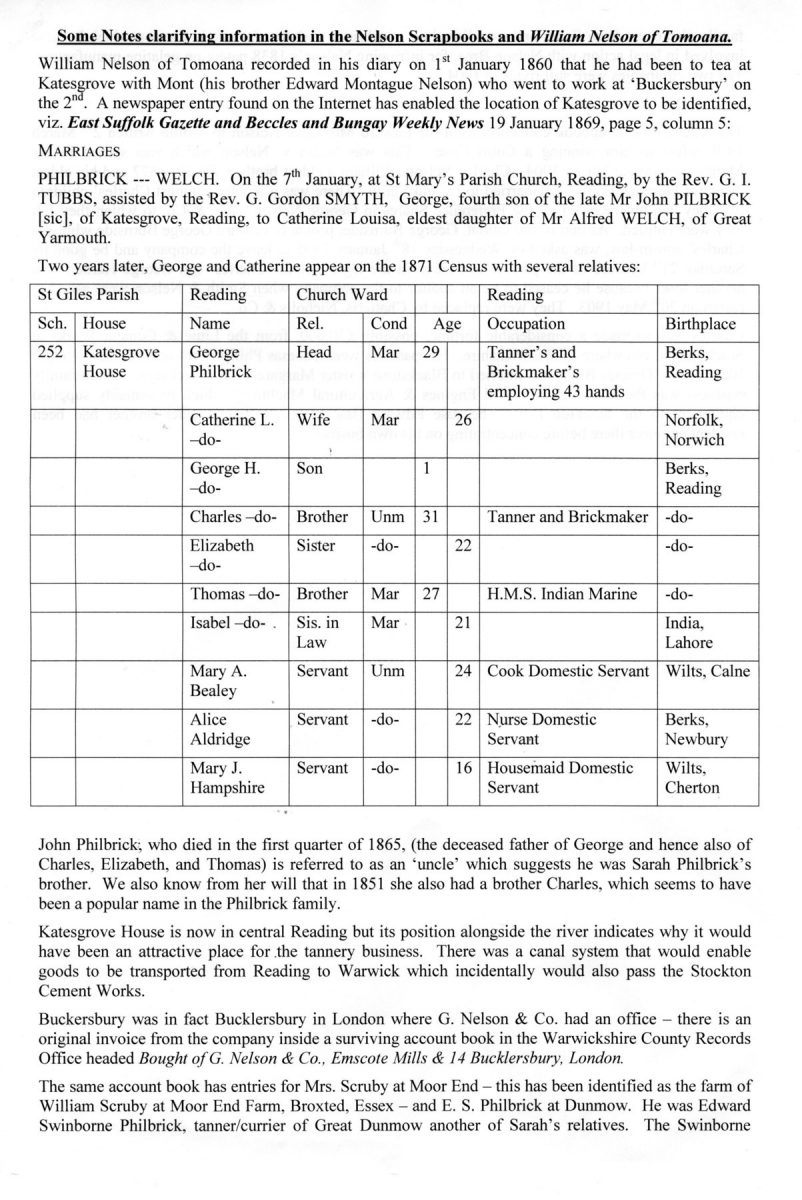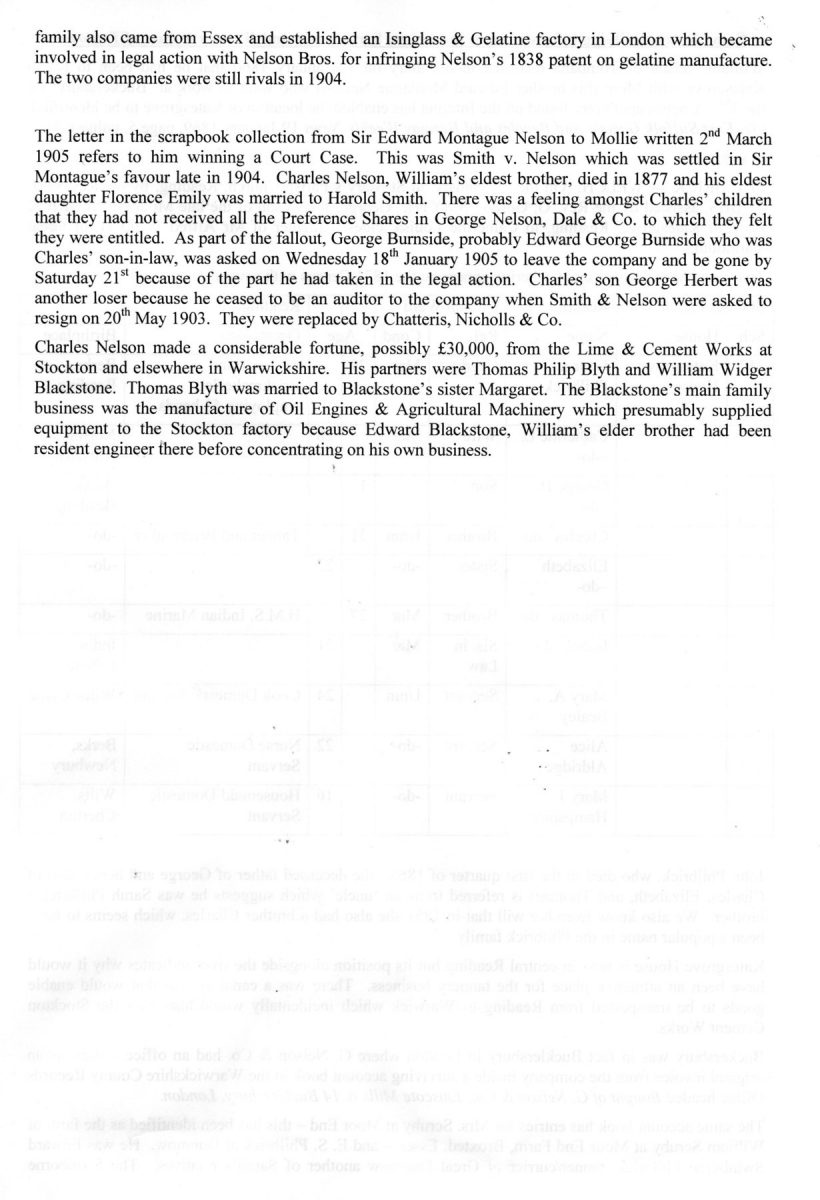Some Notes clarifying information in the Nelson Scrapbooks and William Nelson of Tomoana.
William Nelson of Tomoana recorded in his diary on 1st January 1860 that he had been to tea at Katesgrove with Mont (his brother Edward Montague Nelson) who went to work at ‘Buckersbury’ on the 2nd. A newspaper entry found on the Internet has enabled the location of Katesgrove to be identified, viz. East Suffolk Gazette and Beccles and Bungay Weekly News 19 January 1869, page 5, column 5:
MARRIAGES
PHILBRICK – WELCH. On the 7th January, at St Mary’s Parish Church, Reading, by the Rev. G. I. TUBBS, assisted by the Rev. G. Gordon SMYTH, George, fourth son of the late Mr John PILBRICK [PHILBRICK], of Katesgrove, Reading, to Catherine Louisa, eldest daughter of Mr Alfred WELCH, of Great Yarmouth.
Two years later, George and Catherine appear on the 1871 Census with several relatives:
St Giles Parish Reading Church Ward Reading
Sch. House Name Rel. Cond Age Occupation Birthplace
252 Katesgrove House George Philbrick Head Mar [Married] 29 Tanner’s and Brickmaker’s employing 43 hands Berks, Reading
Catherine L. -do- [Philbrick] Wife Mar 26 Norfolk, Norwich
George H. -do- Son 1 Berks, Reading
Charles -do- Brother Unm [Unmarried] 31 Tanner and Brickmaker -do- [Berks, Reading]
Elizabeth -do- Sister -do- [Unmarried] 22 -do-
Thomas -do- Brother Mar 27 H.M.S. Indian Marine -do-
Isabel -do- Sis. in Law [Sister-in-law] Mar 21 India, Lahore
Mary A. Bealey Servant Unm 24 Cook Domestic Servant Wilts, Calne
Alice Aldridge Servant -do- 22 Nurse Domestic Servant Berks, Newbury
Mary J. Hampshire Servant -do- 16 Housemaid Domestic Servant Wilts, Cherton
John Philbrick, who died in the first quarter of 1865, (the deceased father of George and hence also of Charles, Elizabeth, and Thomas) is referred to as an ‘uncle’ which suggests he was Sarah Philbrick’s brother. We also know from her will that in 1851 she also had a brother Charles, which seems to have been a popular name in the Philbrick family.
Katesgrove House is now in central Reading but its position alongside the river indicates why it would have been an attractive place for the tannery business. There was a canal system that would enable goods to be transported from Reading to Warwick which incidentally would also pass the Stockton Cement Works.
Buckersbury was in fact Bucklersbury in London where G. Nelson & Co. had an office – there is an original invoice from the company inside a surviving account book in the Warwickshire County Records Office headed Bought of G. Nelson & Co, Emscote Mills & 14 Bucklersbury, London.
The same account book has entries for Mrs. Scruby at Moor End – this has been identified as the farm of William Scruby at Moor End Farm, Broxted, Essex – and E. S. Philbrick at Dunmow. He was Edward Swinborne Philbrick, tanner/currier of Great Dunmow another of Sarah’s relatives. The Swinborne













Do you know something about this record?
Please note we cannot verify the accuracy of any information posted by the community.